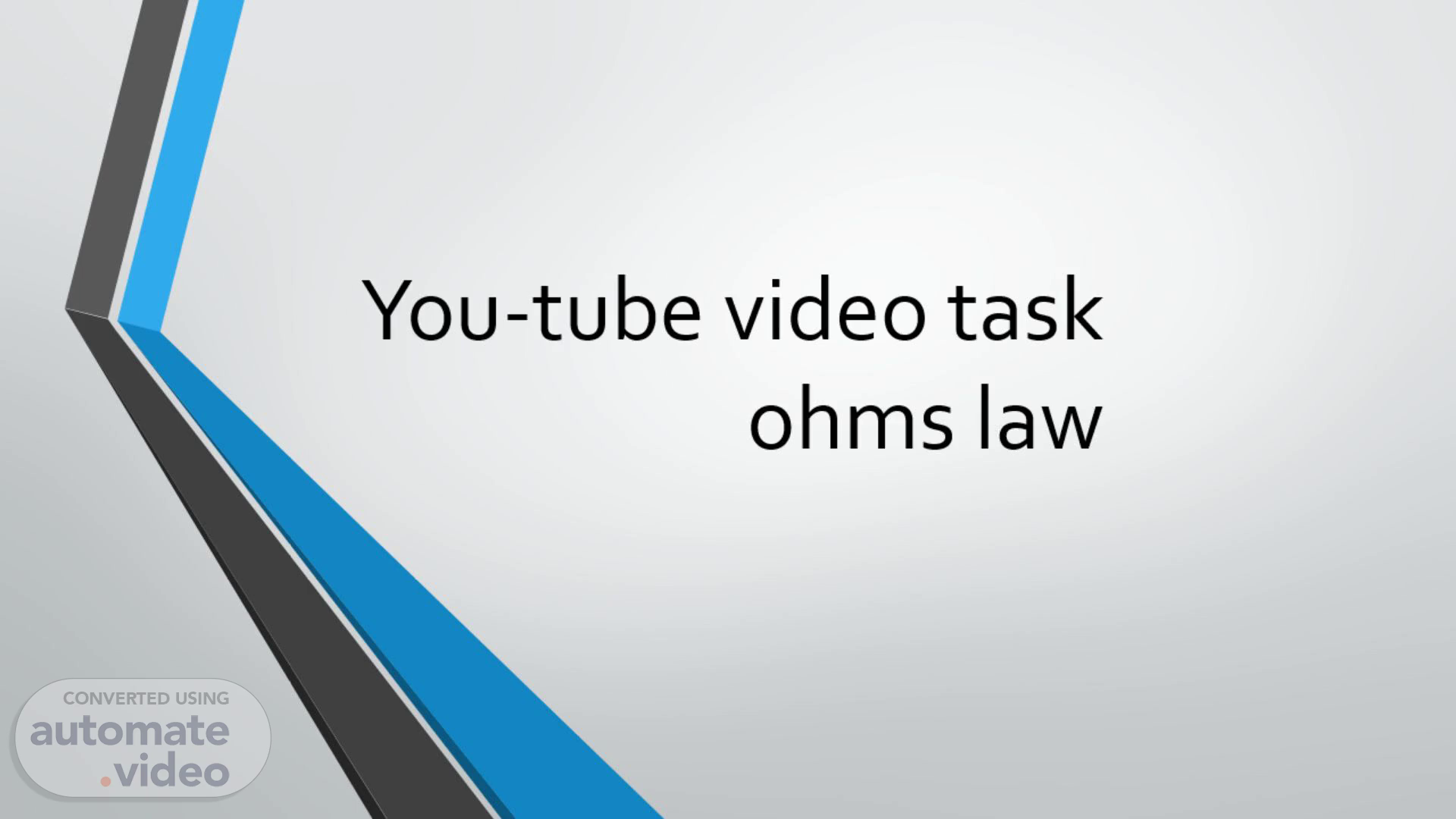Scene 1 (0s)
[Audio] You tube video task, on the topic ohms law, by Garrett smithers.
Scene 2 (7s)
[Audio] Who is this old guy you ask. This is Georg Simon Ohm. German physicist and mathematician best known for his contributions to electrical engineering, particularly for formulating Ohm's Law..
Scene 3 (20s)
[Audio] Discovered by Georg Ohm in 1827, Ohm's Law is a groundbreaking principle in electrical science. By experimenting with chemical batteries and wires of different sizes, Ohm found that voltage and current are directly proportional to each other, as long as the resistance is constant. This discovery laid the foundation for how we understand electrical circuits today..
Scene 4 (41s)
[Audio] Ohm's Law defines a fundamental relationship between three key components: Voltage (V) – the electrical "pressure" or potential difference that pushes electric charges through a circuit. Current (I) – the flow of electric charge, similar to the flow of water through a pipe. Resistance (R) – the opposition to the flow of current, much like a narrow pipe restricting water flow. The analogy of the water pipe helps break this concept down, we see the pump is equal to the voltage, the water flow speed is equal to the current, and well the resistance for both resists the flow..
Scene 5 (56s)
[Audio] The law is often expressed in the formula: V=I times R This simple equation shows that voltage equals current times resistance. But what's great about it is that you can rearrange the formula depending on what you need to find. Shown by the image to the right. This makes Ohm's Law incredibly practical because if you have two out of the three variables, you can always calculate the third. It's often visualized using the Ohm's Law triangle, which helps to quickly remember the formula and its variations. Just cover the variable you're solving for, and the remaining two give you the equation..
Scene 6 (1m 11s)
[Audio] Throughout our study's so far, we have often been given a drawing of circuits like this where we are given only 2 out of the 3 variables. Say we needed to find I if V= 8 and R= 30, you would use the V divided by R variation of the formular. Which results in 2.66. if we know the law and how to apply the formulars you can complete any variation of these questions where there is 1 unknown.
Scene 7 (1m 19s)
[Audio] In summary, Ohm's Law links voltage, current, and resistance in a straightforward yet powerful way. thanks to this foundational law scientists throughout our history have been able to further develop electrical circuits leading to the technology we have today Big thanks to the genius innovator George Ohm.
Scene 8 (1m 38s)
[Audio] Thank you for watching—don't forget to hit like and subscribe for more content like this!.
